Overview
In today's competitive digital landscape, many startups face a significant challenge: enhancing website user experience (UX) to ensure success. It's a common struggle, and the implications can be daunting. Poor usability and accessibility can lead to frustrated users and missed opportunities. However, there is hope. By embracing six essential steps, startups can transform their approach to UX, ultimately fostering a nurturing environment for their users.
- Conducting user research is the first step, allowing founders to truly understand the needs and preferences of their audience. This empathetic approach lays the foundation for designing intuitive interfaces that resonate with users.
- Testing with real users not only validates these designs but also builds a sense of community and connection.
- Measuring success through key performance indicators is crucial, as it provides insights into user satisfaction and areas for improvement.
- With this data in hand, startups can implement ongoing enhancements, ensuring that the user experience continually evolves to meet changing needs.
- By prioritizing these steps, startups can significantly boost user satisfaction and conversion rates, paving the way for sustainable growth.
Remember, you are not alone in this journey. Many founders have faced similar challenges, and by sharing experiences and insights, we can support one another in creating exceptional user experiences that drive success.
Introduction
Website user experience (UX) has transitioned from being a mere luxury to an essential aspect for startups striving to flourish in today's competitive digital landscape. It's concerning to note that studies reveal a staggering 88% of consumers are unlikely to return after encountering a poor experience. This reality heightens the stakes for founders like you.
In this article, we will explore six vital steps to elevate your website's UX. Our aim is to equip you with the tools necessary to enhance user satisfaction, increase conversion rates, and cultivate long-term loyalty. Yet, we understand that navigating the intricate landscape of user needs and design challenges can feel overwhelming.
How can you ensure that your website not only meets but truly exceeds expectations? Let's embark on this journey together, as we uncover the solutions that can make a meaningful difference.
Understand the Importance of Website UX
Website UX, or User Experience, signifies the overall experience that individuals have when interacting with a website, which includes aspects like usability, accessibility, and the emotional responses that occur during navigation. For many startups, a positive UX is not just beneficial; it’s essential. It can significantly influence retention and conversion rates, which are critical for growth.
Imagine facing the reality that 88% of online consumers are unlikely to return to a site after a negative experience. This statistic highlights the urgency of prioritizing website UX in your digital strategy. At RNO1, we understand this need deeply. Our aesthetics-oriented approach ensures that we enhance functionality while crafting solutions that truly resonate with users.
By investing in website UX, organizations can witness conversion rates soar by as much as 400%. This illustrates the substantial financial benefits tied to effective aesthetics. Moreover, effective website UX design cultivates long-term customer loyalty, allowing startups to shine in a crowded marketplace.
For instance, consider ESPN, which experienced a 35% increase in online income after enhancing their platform's user-friendliness. By focusing on creating a smooth and captivating website UX—especially through mobile optimization, where 53% of mobile visitors abandon a site if it takes longer than 3 seconds to load—startups can significantly enhance their chances of success in the digital landscape.
We invite you to reflect on your own experiences with website navigation. How has your journey been? Together, let’s work towards a user experience that not only meets expectations but exceeds them.
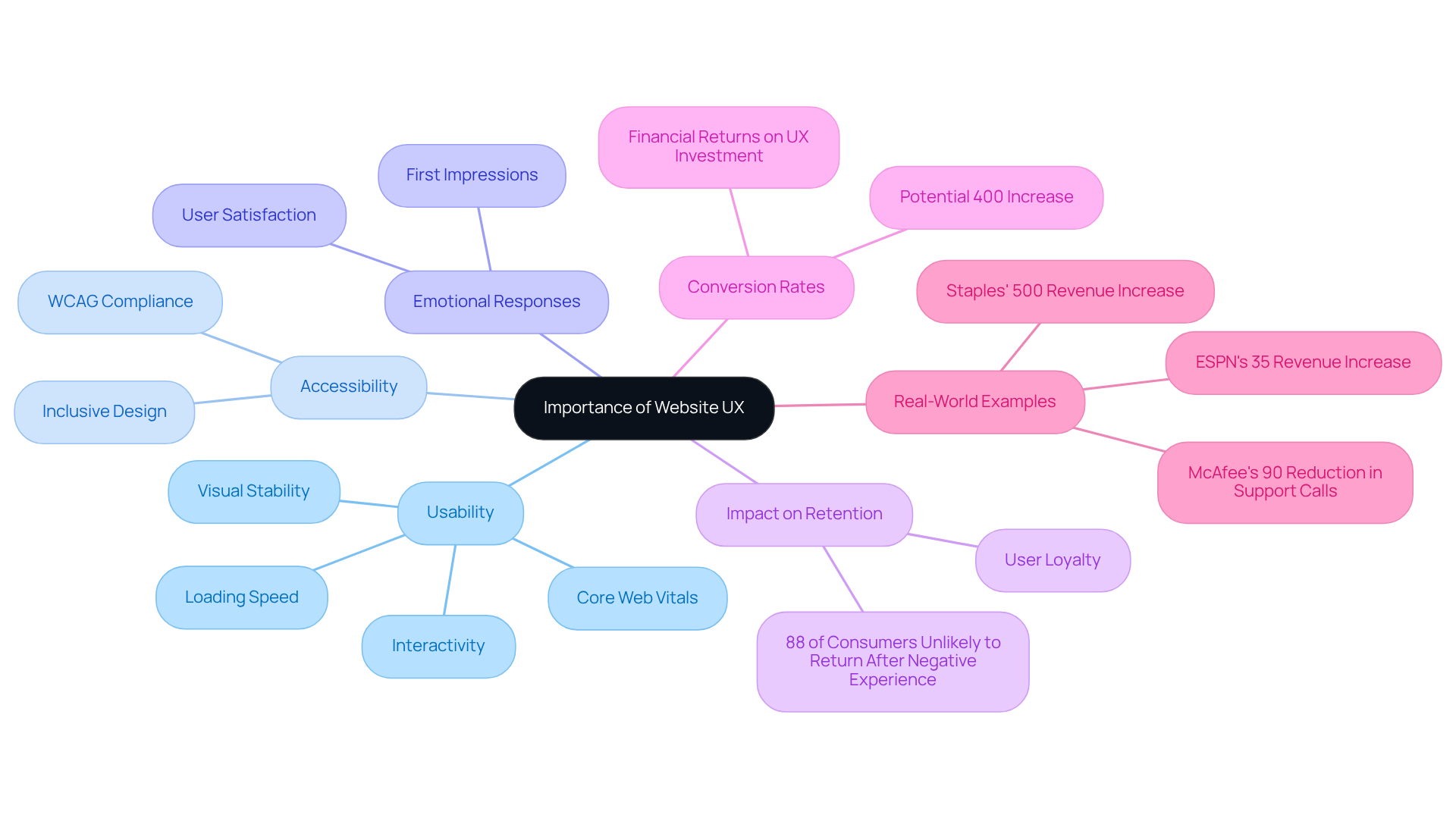
Conduct User Research to Identify Needs
To enhance your website UX, it’s essential to start with thorough audience research. This research should gather both qualitative and quantitative insights about your target demographic. Engaging in techniques like surveys, interviews, and usability testing can reveal the preferences and behaviors of individuals, helping you to understand their needs more deeply. For instance, consider asking about their experiences with comparable platforms or the features they value the most. This kind of data analysis can uncover shared pain points and expectations, allowing you to create a website with a user experience that truly addresses their needs.
It’s important to recognize that 63% of UX researchers conduct research, underscoring its significance in developing user-focused solutions. Moreover, examining successful case studies, such as those from American Airlines, illustrates how addressing usability issues early on can lead to substantial cost savings and improved client satisfaction. Ultimately, the goal is to design a concept that resonates with your audience, fostering both engagement and loyalty. By prioritizing their experiences, you create a nurturing environment that invites connection and understanding.
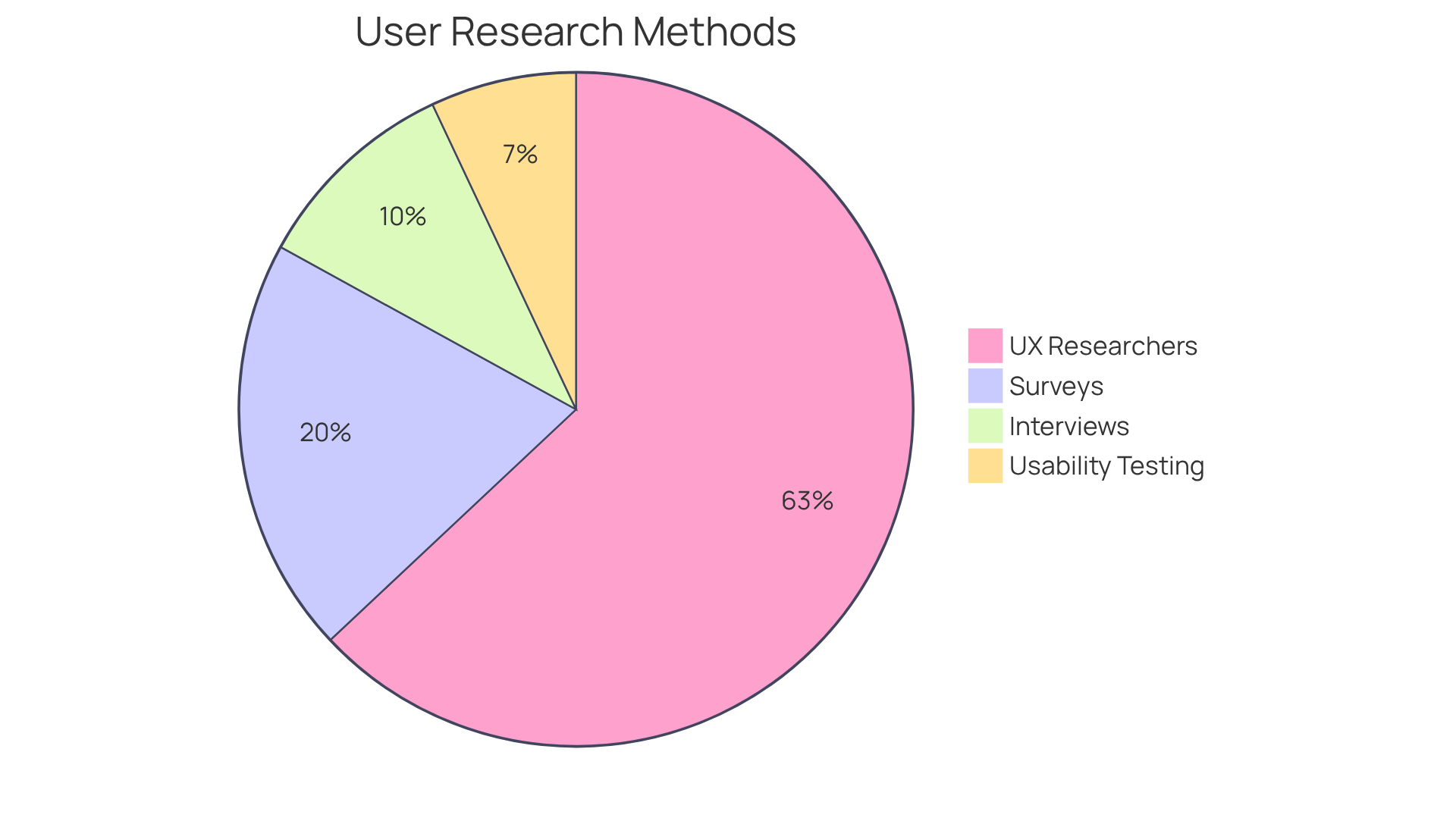
Design an Intuitive and Accessible Interface
At RNO1, we understand the challenges you face when trying to create intuitive and accessible interfaces that truly enhance the experience for everyone. Many individuals struggle with navigating complex websites, often feeling lost or frustrated. This can lead to a sense of exclusion, especially for those who rely on accessibility features. It’s essential to establish a clear navigation structure that allows users to locate information swiftly, creating a welcoming environment.
Imagine the relief of your visitors when they can easily find what they need. By utilizing well-known layout patterns and ensuring your website is responsive, you can provide a seamless experience on both desktop and mobile devices. We believe that accessibility features, such as alt text for images and keyboard navigation options, are not just additions; they are vital components that accommodate individuals with disabilities, making your site accessible to all.
A well-structured layout, combined with a visually appealing appearance, not only enhances visitor engagement but also invites guests to explore further into your site. When you focus on accessibility and functionality in your web strategy, you can experience measurable advantages. Imagine seeing increased conversion rates and enhanced visitor satisfaction, all stemming from a commitment to inclusivity and user-friendly design. Together, we can create a digital space that welcomes everyone.
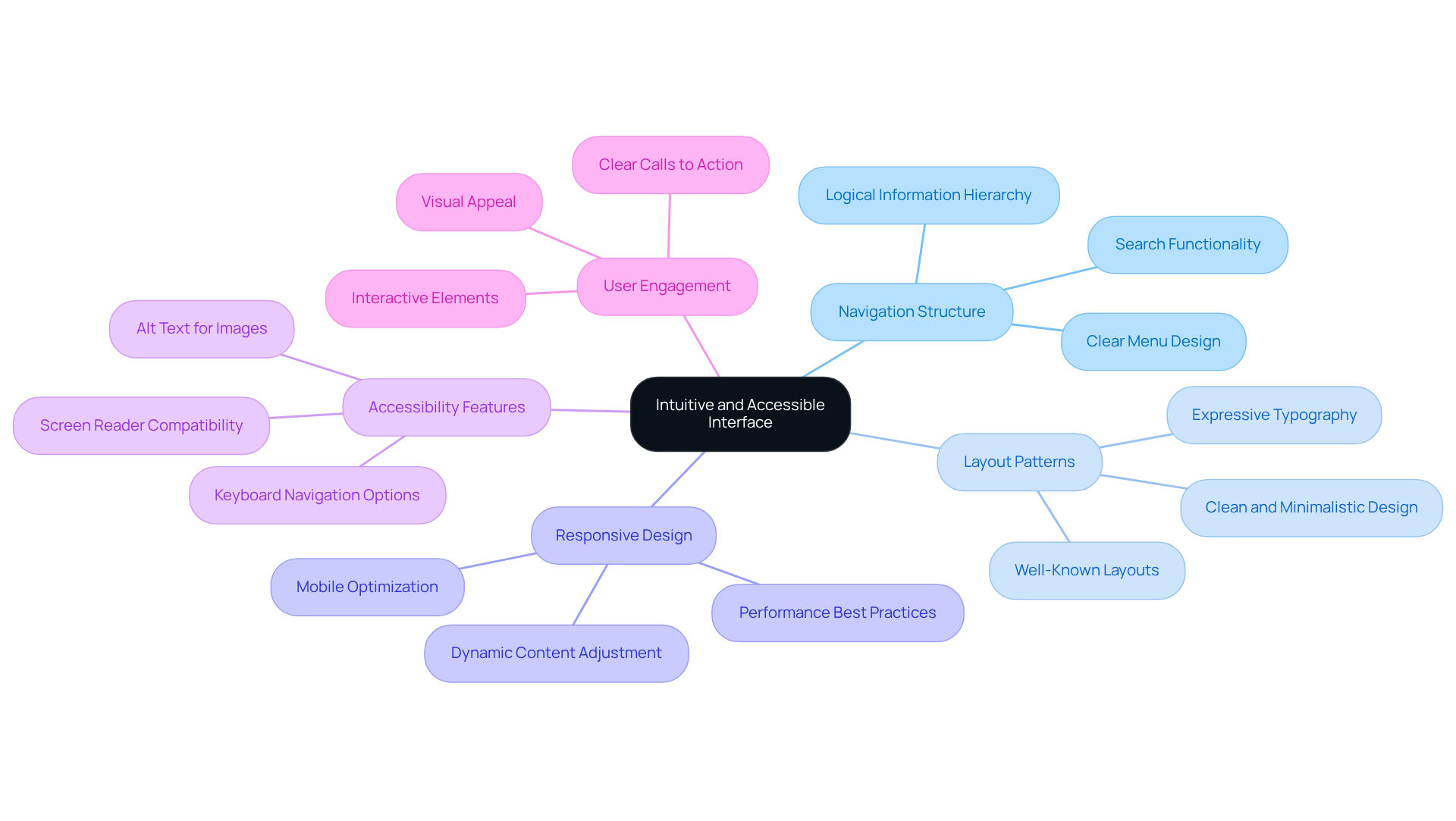
Test and Iterate Based on User Feedback
After executing your design, it's essential to conduct usability testing to gather feedback from real participants. This process may include observing individuals as they navigate your site and asking them to complete specific tasks. It's important to note that 91% of dissatisfied clients leave without providing feedback, underscoring the necessity of actively seeking customer insights. Additionally, 80% of clients consider a firm's experience as crucial as its products or services, highlighting how customer experience significantly impacts retention. Pay close attention to any challenges they face and gather their suggestions for improvement. By utilizing this feedback, you can make necessary adjustments to your design, fostering a culture of responsiveness and adaptability within your startup.
Iteration is vital; continuously refining your website based on visitor insights ensures it meets the evolving needs of your audience. For instance, Casa Mineira, a Brazilian real estate firm, increased form submissions by 57% by enhancing the homepage search box functionality based on visitor feedback. This example illustrates how effective iteration can lead to substantial improvements in audience engagement and conversion rates. Furthermore, statistics reveal that 60% of online consumers exclusively use mobile devices for purchasing decisions, emphasizing the need for mobile optimization in your design.
To efficiently collect feedback from participants, consider methods such as:
- Surveys
- Interviews
- Effectiveness tests
A/B testing is also a valuable strategy, allowing you to compare different design variations to see which performs better for your conversion goals. As Jacob Nielsen noted, '5 individuals will discover 85% of functionality issues when testing consistently,' highlighting the importance of testing for user-friendliness. By prioritizing user feedback in your platform iteration process, you not only enhance user satisfaction but also position your startup for long-term success in a competitive digital landscape. Additionally, remember that the average System Usability Scale (SUS) score is 68, which can serve as a benchmark for evaluating usability improvements.
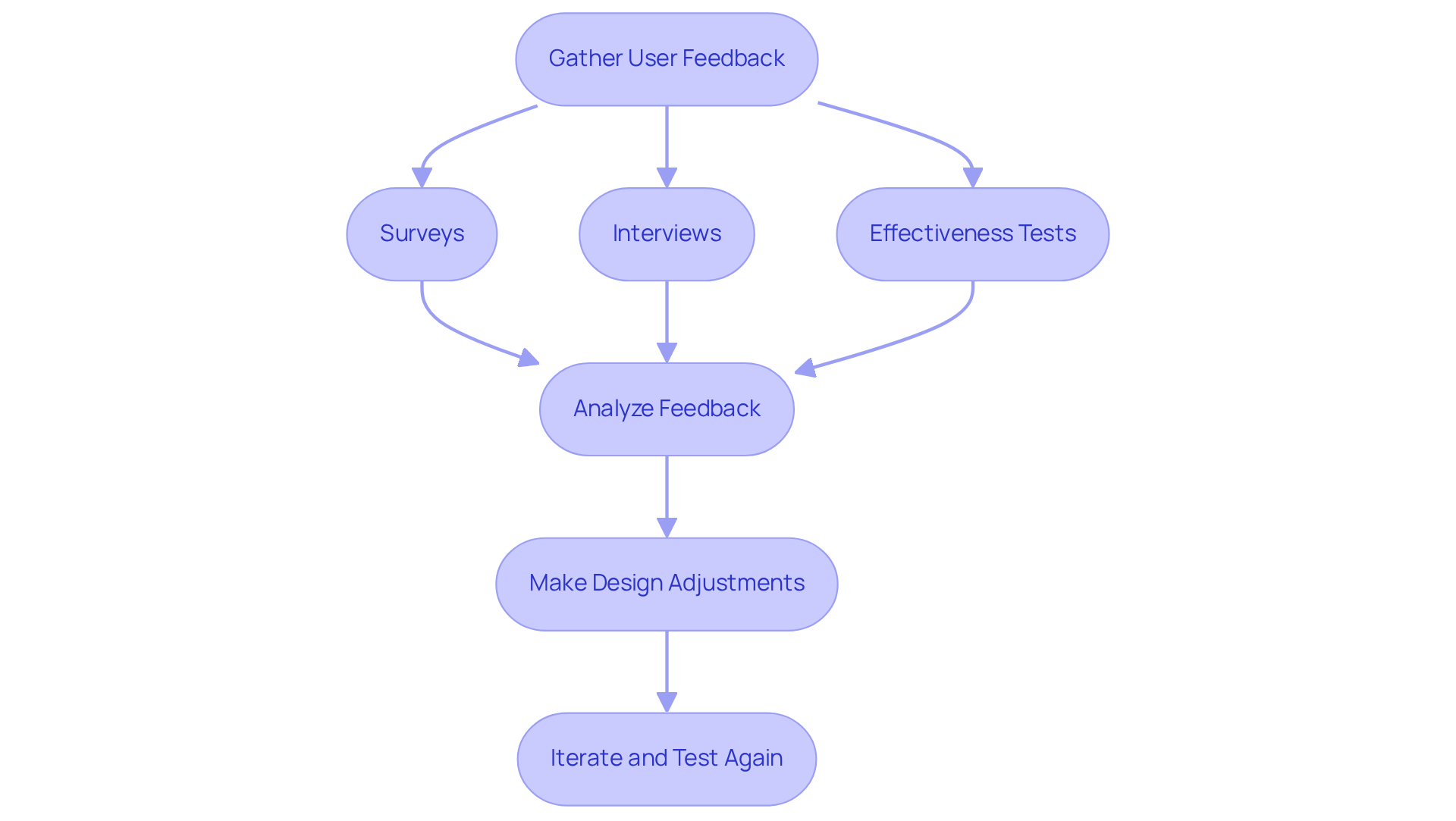
Measure UX Success with Key Performance Indicators
Assessing the success of your website UX can feel overwhelming, especially when you're striving to meet your business objectives. Many founders grapple with how to measure this effectively. You might find yourself wondering: Are my users satisfied? Are they completing tasks efficiently? These questions are crucial, as they directly impact your growth and the overall experience you provide.
Common user experience key performance indicators (KPIs) to consider include:
- Task success rate
- Time on task
- Satisfaction scores
- Conversion rates
For instance, if increasing sign-ups is your goal, tracking the conversion rate of visitors who successfully complete the sign-up process becomes essential. Regularly analyzing these metrics not only helps you understand how well your online platform is performing but also highlights areas that may need improvement.
By taking the time to assess website UX success, you empower yourself to make data-informed choices that enhance the user experience and foster business growth. Remember, you’re not alone in this journey; many startup founders face similar challenges, and together, we can navigate towards a more successful and fulfilling outcome.
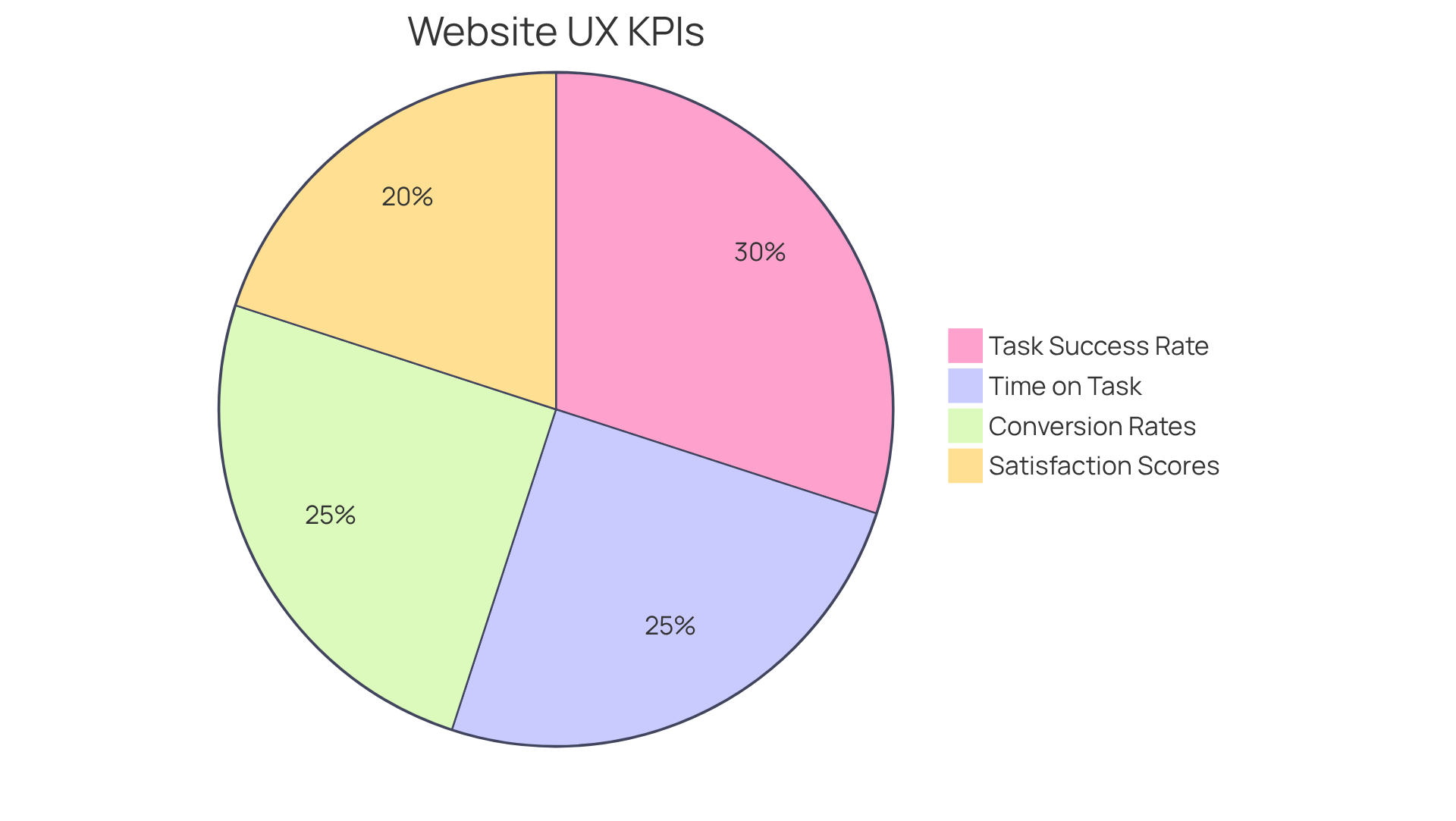
Implement Continuous Improvement Strategies
Many tech startup founders face the challenge of ensuring their website UX remains relevant and engaging. This problem can be daunting, especially when feedback is overlooked or performance metrics are not analyzed regularly. The implications of neglecting these aspects can lead to stagnation, leaving your startup vulnerable to competitors who are quick to adapt.
Imagine the frustration of watching your audience drift away because their evolving needs weren't met. This is a common pain point for many businesses, and it can feel isolating. However, there is a nurturing path forward. By embracing a culture of continuous enhancement, you can transform this challenge into an opportunity for growth. Schedule regular reviews to uncover new enhancement possibilities and consider implementing A/B testing for new features or design changes. This approach allows you to evaluate their impact on audience behavior effectively.
At RNO1, we understand the importance of swiftly adapting to user expectations to improve website UX. Our user-centric strategies empower brands to drive rapid ROI while fostering a supportive environment for innovation. You are not alone in this journey; many businesses struggle with maintaining momentum. Actively cultivating a culture of continuous improvement can be your solution, ensuring that you not only meet but exceed your users' needs. Together, we can navigate these challenges and create a thriving community around your brand.
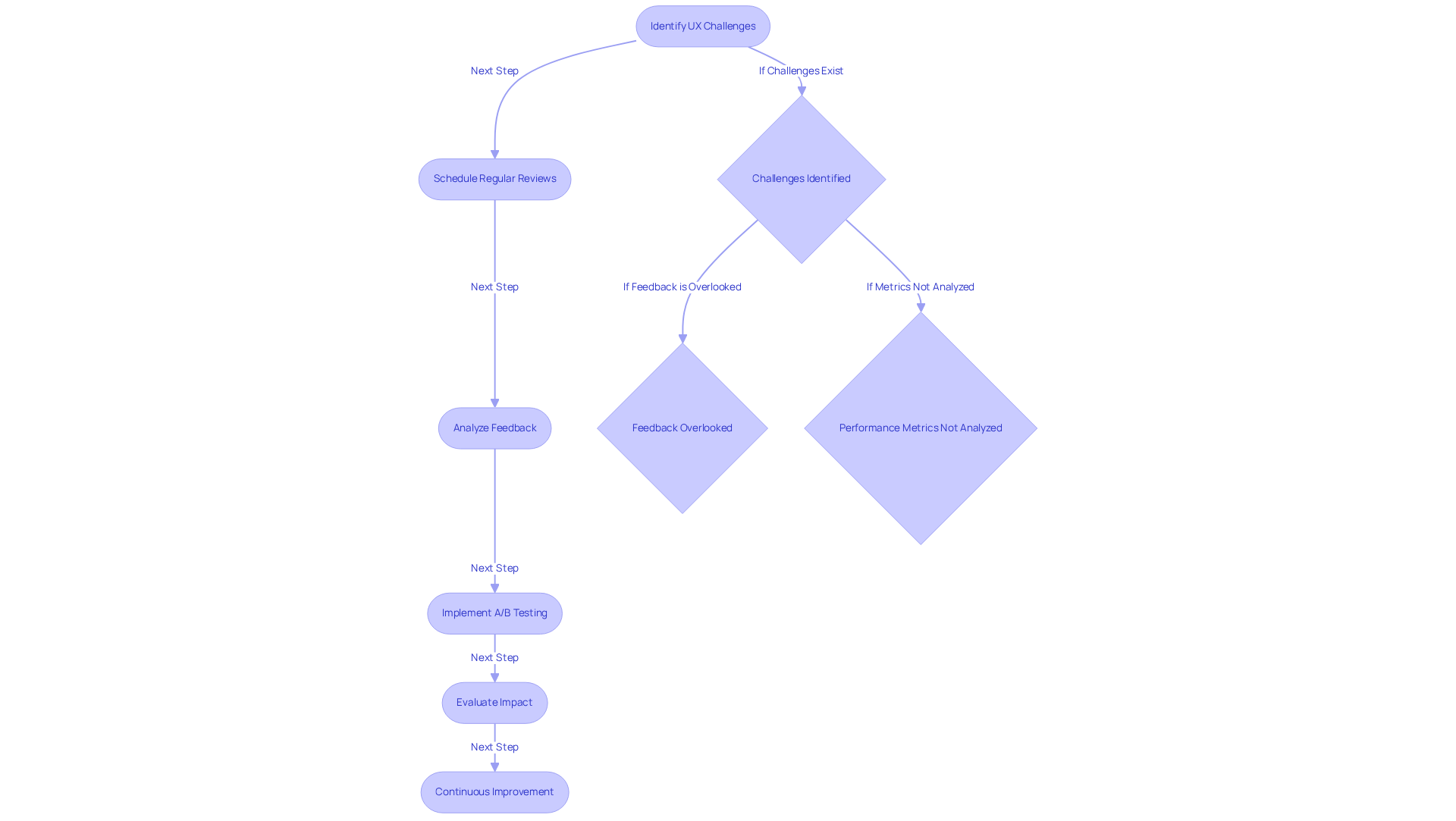
Conclusion
Website UX poses a significant challenge for startups, impacting not just user satisfaction but also retention and conversion rates. When startups overlook the importance of a positive user experience, they risk losing potential customers and financial opportunities. It's essential to recognize that prioritizing UX can lead to lasting benefits and customer loyalty, making it a vital element of any digital strategy. By embracing the significance of UX, startups can navigate the competitive landscape more effectively.
Throughout our exploration, we highlighted key strategies for enhancing website UX, such as:
- Conducting user research to uncover real needs
- Designing intuitive and accessible interfaces
- Testing designs based on user feedback
Measuring success through key performance indicators and implementing continuous improvement strategies are equally crucial. Each of these steps contributes to a user-centered design that not only meets but strives to exceed expectations, ultimately fostering growth and engagement.
For startups aiming for long-term success, adopting a proactive approach to website UX is essential. By placing user experience at the forefront and continuously refining strategies based on feedback and performance metrics, businesses can adapt to the ever-changing needs and preferences of their audience. This dedication to improvement nurtures a loyal customer base and ensures that startups remain relevant in the dynamic digital landscape.
Frequently Asked Questions
What is website UX?
Website UX, or User Experience, refers to the overall experience individuals have when interacting with a website, encompassing aspects like usability, accessibility, and emotional responses during navigation.
Why is website UX important for startups?
A positive website UX is essential for startups as it significantly influences retention and conversion rates, which are critical for growth. A negative experience can lead to 88% of online consumers not returning to a site.
How can investing in website UX benefit organizations financially?
Investing in website UX can lead to conversion rates increasing by as much as 400%, illustrating substantial financial benefits tied to effective aesthetics and user experience.
Can you provide an example of a company that improved its online income through better UX?
ESPN experienced a 35% increase in online income after enhancing their platform's user-friendliness, demonstrating the financial impact of improved website UX.
What role does mobile optimization play in website UX?
Mobile optimization is crucial as 53% of mobile visitors abandon a site if it takes longer than 3 seconds to load. A smooth and captivating mobile experience can significantly enhance a startup's chances of success.
How can organizations identify the needs of their audience for better UX?
Organizations can enhance website UX by conducting thorough audience research, utilizing techniques like surveys, interviews, and usability testing to gather qualitative and quantitative insights about their target demographic.
Why is user research significant in developing user-focused solutions?
User research is significant because 63% of UX researchers conduct it, highlighting its importance in understanding user preferences and behaviors, which helps in creating tailored solutions that address their needs.
What is the goal of conducting user research for website UX?
The goal of conducting user research is to design a website concept that resonates with the audience, fostering engagement and loyalty by addressing shared pain points and expectations.




